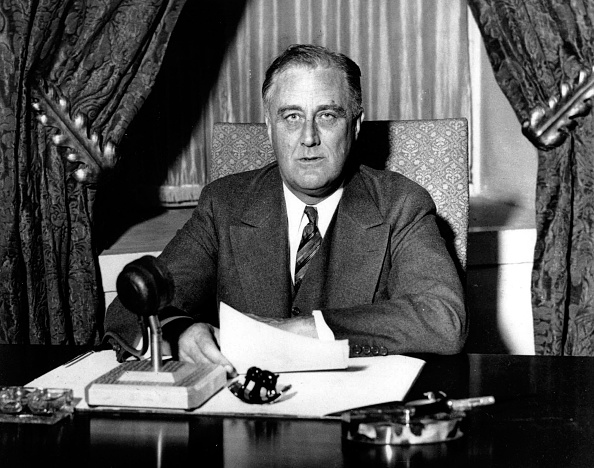The history of the United States has been shaped by the leadership of its presidents. Each administration has left its mark on the country, influencing domestic policies, foreign relations, and national identity. Below is a summary of the major contributions and key events of each U.S. president.
Early Presidents and Nation-Building (1789-1825)
- George Washington (1789-1797) – Established key government structures, set the two-term precedent, and helped unify the new nation.
- John Adams (1797-1801) – Navigated tensions with France in the XYZ Affair and passed the controversial Alien and Sedition Acts.
- Thomas Jefferson (1801-1809) – Completed the Louisiana Purchase, expanding U.S. territory, and commissioned the Lewis and Clark Expedition.
- James Madison (1809-1817) – Led the nation through the War of 1812, strengthening U.S. independence.
- James Monroe (1817-1825) – Introduced the Monroe Doctrine, warning European nations against interference in the Americas.
Expansion and Conflict (1825-1861)
- John Quincy Adams (1825-1829) – Advocated for national infrastructure projects.
- Andrew Jackson (1829-1837) – Expanded executive power and enacted the Indian Removal Act, leading to the Trail of Tears.
- Martin Van Buren (1837-1841) – Faced the economic Panic of 1837.
- William Henry Harrison (1841) – Served the shortest presidency, dying after 32 days in office.
- John Tyler (1841-1845) – Annexed Texas into the Union.
- James K. Polk (1845-1849) – Led the U.S. in the Mexican-American War, gaining new territories.
- Zachary Taylor (1849-1850) – War hero who died in office.
- Millard Fillmore (1850-1853) – Passed the Compromise of 1850 to ease tensions over slavery.
- Franklin Pierce (1853-1857) – Signed the Kansas-Nebraska Act, increasing sectional tensions.
- James Buchanan (1857-1861) – Failed to prevent the Civil War.
Civil War and Reconstruction (1861-1877)
- Abraham Lincoln (1861-1865) – Led the Union through the Civil War and abolished slavery. Assassinated in 1865.
- Andrew Johnson (1865-1869) – Clashed with Congress during Reconstruction and was impeached.
- Ulysses S. Grant (1869-1877) – Focused on Reconstruction and fighting the Ku Klux Klan.
Industrial Growth and Social Change (1877-1921)
- Rutherford B. Hayes (1877-1881) – Ended Reconstruction by withdrawing federal troops from the South.
- James A. Garfield (1881) – Assassinated after a few months in office.
- Chester A. Arthur (1881-1885) – Introduced civil service reforms.
- Grover Cleveland (1885-1889) – First term focused on anti-corruption measures.
- Benjamin Harrison (1889-1893) – Passed the Sherman Antitrust Act.
- Grover Cleveland (1893-1897) – Only president to serve two non-consecutive terms.
- William McKinley (1897-1901) – Led the U.S. in the Spanish-American War. Assassinated in 1901.
The Progressive Era and World Wars (1901-1945)
- Theodore Roosevelt (1901-1909) – Championed conservation, trust-busting, and the Panama Canal.
- William Howard Taft (1909-1913) – Strengthened judicial power and later became Chief Justice.
- Woodrow Wilson (1913-1921) – Led the U.S. through World War I and promoted the League of Nations.
- Warren G. Harding (1921-1923) – Faced the Teapot Dome scandal, died in office.
- Calvin Coolidge (1923-1929) – Presided over economic growth in the Roaring Twenties.
- Herbert Hoover (1929-1933) – Blamed for the Great Depression.
- Franklin D. Roosevelt (1933-1945) – Led the U.S. through the Great Depression and World War II, serving four terms.
Post-War America and Modernization (1945-Present)
- Harry S. Truman (1945-1953) – Dropped atomic bombs on Japan and began Cold War containment.
- Dwight D. Eisenhower (1953-1961) – Expanded highways and enforced school desegregation.
- John F. Kennedy (1961-1963) – Managed the Cuban Missile Crisis and launched the space race before being assassinated.
- Lyndon B. Johnson (1963-1969) – Passed civil rights laws and escalated the Vietnam War.
- Richard Nixon (1969-1974) – Opened China relations but resigned due to Watergate.
- Gerald Ford (1974-1977) – Pardoned Nixon.
- Jimmy Carter (1977-1981) – Brokered the Camp David Accords but struggled with the energy crisis.
- Ronald Reagan (1981-1989) – Strengthened the economy and contributed to ending the Cold War.
- George H.W. Bush (1989-1993) – Led the Gulf War.
- Bill Clinton (1993-2001) – Balanced the budget and faced impeachment.
- George W. Bush (2001-2009) – Responded to 9/11 and launched the War on Terror.
- Barack Obama (2009-2017) – Passed the Affordable Care Act and led the mission to kill Osama bin Laden.
- Donald Trump (2017-2021) – Focused on tax cuts, border security, and faced two impeachments.
- Joe Biden (2021-Present) – Managed COVID-19 recovery, withdrew from Afghanistan, and supported Ukraine.
Why Franklin D. Roosevelt’s Numbering Issue Occurred
Some confusion regarding Franklin D. Roosevelt’s presidential numbering arises due to the distinction between the total number of presidential terms and the number of individual people who have served as president. Franklin D. Roosevelt was elected four times, serving from 1933 to 1945, making him the 32nd president in chronological order. However, in certain miscalculations or errors, he might be incorrectly labeled as the 31st due to incorrect sequencing or overlooking Grover Cleveland’s non-consecutive terms, which makes Cleveland both the 22nd and 24th president. Proper numbering should always recognize FDR as the 32nd president based on historical order.

Conclusion
Each president has shaped the nation in significant ways, guiding the United States through challenges and progress. From the founding fathers to modern leaders, the presidency remains a dynamic force in American history.

No comments yet.